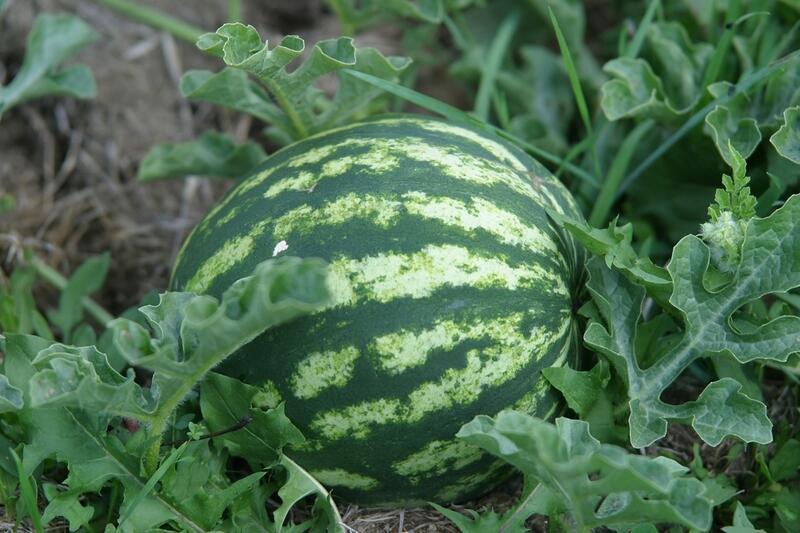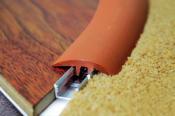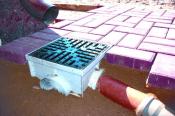Search
Login
Growing watermelons in the open ground: varieties, planting characteristics and subtleties of care
Watermelon, everyone’s favorite summer treat originating in South Africa, one way or another, watermelon is the most important summer thirst tamer. Growing melons is not difficult if you know some important principles. This article presents interesting varieties and information about growing watermelons in the garden.
Content
- Varieties of watermelons for black soil video
- Growing seedlings video
- Planting watermelons
- Watermelon growing in open field video
- Diseases and Pests
Varieties of watermelons for black soil
Currently, there are many varieties of watermelons. If you do not plan to plant watermelon seedlings, seeds of an early variety are suitable, in this case watermelons will ripen in September. Some varieties are less susceptible to disease, others differ in sugar flesh and its color, fruit shape, ripening period.
- Yellow and Orange Pulp: Lunar, Orange Honey, Golden Goose
- Sugar varieties: Jubilee, Kid, Astrakhan
- Varieties with thin peel: Spark, Dulsineya, Uzbek
- Varieties resistant to disease: Ataman, Skorik, Lezhebok
- Watermelon, early varieties: Skorik, Victoria, Top Gun
- Mid-ripe watermelons: Bykovsky, Stimulus,
- Later varieties: Chill, Icarus, Bush
- Seedless Watermelons: Ecstasy, Orthal, Lunar

Recommended watermelon varieties for the middle band: Cossack, Twinkle, Skorik, Kholodok, Siberian. Let's consider them in more detail:
- Cossack - grade tolerates transportation, despite the bark of only 2 cm thick. Early ripening, rounded fruits, average fruit weight 8 kg.
- Spark - an early, thin-barked variety with low keeping quality and transportation, fruits weighing up to 3 kg. The seeds are small, resistance to frost and disease is average.
- Skorik is the most early ripening variety, characterized by a pronounced aroma of fruits, keeping quality and resistance to anthracnose. Thick-skinned, weight up to 4 kg.
- Chill - late variety, fruit weight up to 7 kg. Chill is resistant to frost, transportable. Disease resistance is low.
- Siberian - withstands frosts, is resistant to diseases, the variety is early. Fruits up to 5 kg, thin bark, watermelons of this variety are appreciated for their unpretentiousness and sweet taste.
Growing seedlings
In the southern regions of Russia, it is possible to plant seeds in open ground, in other areas, in order to accelerate the process of fruit growth and ripening, it is better to grow seedlings, sow seeds 4-5 weeks before planting on the site.

Watermelon seeds are wrapped with thin paper or cotton cloth and left until sprouts appear in water at a temperature of about 28C, to protect future plants from diseases, the seeds are kept in a solution of manganese and zinc for 24 hours. After germination, the seeds are planted in separate containers with peat with a diameter of 10- 15 cm. Seedlings will be ready for planting when 3-4 leaves appear. A week before planting, the temperature and watering are gradually reduced.
Planting watermelons
Melons do not tolerate acidic soil, farmers choose fertile soil (pH 5.5-6) \u200b\u200bfertilized with compost. The main requirements for growing watermelons in the middle lane are a sunny place, air warmed up to 21 - 29C, land without weeds, there were no such predecessors as legumes and cabbage on the site. Watermelons are planted at a distance of one meter, holes for seedlings are 5-8 cm deep.

The best forerunners of watermelons are onions, tomatoes, early potatoes, winter wheat and rye. These plants increase soil fertility, contribute to the maturation of watermelons 10-15 days ahead of schedule.
Watermelon growing in open field
Watermelons need watering, a large amount of light and heat. The latter can be improved with mulch with a layer of 4-5 cm, mulch also increases the temperature of the soil to 10C and will not allow it to dry out from the wind. Competitors of food for watermelons are weeds, carefully remove them without damaging the roots of melons. With a lack of moisture, watermelons do not grow, there are no fruit ovaries.
Watermelons in the growth period are fertilized with a potassium-phosphorus mixture and nitrogen. The technology for growing watermelons is moderate watering, loosening the soil and weeding. The remains of vegetation after weeding are immediately removed from the site, diseased plants are burned.
When plants begin to bear fruit, reduce watering to accelerate ripening.

About 40 days after pollination, the fruits ripen, if the watermelons are not ripe before October, they are cut and stored in the room where ripening continues.
Ripe watermelons are characterized by a sonorous sound when tapped and a dry tail, ripening begins in mid-August. Fruits, depending on the variety, are stored for up to 3 months and tolerate transportation well (except for thin-bred varieties).
Diseases and Pests
Significant damage to crops is caused by diseases such as anthracnose, fusarium and powdery mildew. The right conditions for growing watermelons and the choice of varieties resistant to diseases will prevent diseases. The most common disease is anthracnose, which occurs during the rainy season. Every 10-12 days after rain, watermelons are sprayed with a 1% solution of Bordeaux liquid and copper oxychloride (0.4-0.6 l / 10m2). Spraying stops 18 days before harvesting.
The main pests of watermelons are aphids, wireworms, spider mites. The fight against them and prevention consists in spraying ash or garlic with infusion, removing and burning the plants most populated by pests. Processing ends a month before harvesting.






